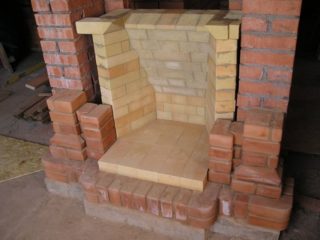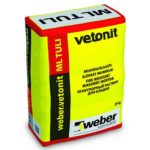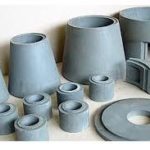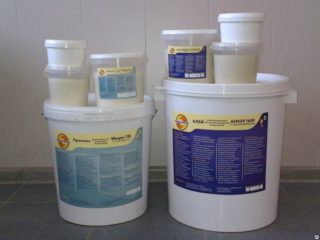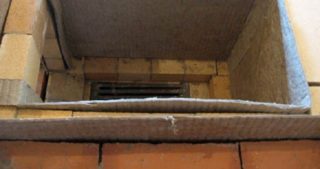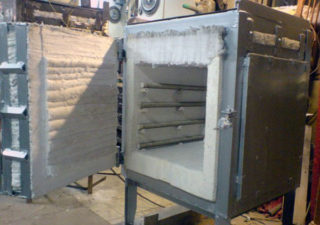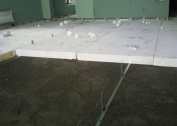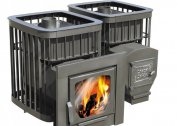The walls of the combustion chambers of furnaces of any type need additional protection, since they are constantly exposed to open fire. To prevent them from burning out, it is necessary to create an additional facing layer by means of a lining. The lining of the furnace is carried out in several available ways, taking into account the material from which the device for heating is made, and other factors.
Description of the process and the purpose of the lining
Lining is the lining of the inner walls of the chambers in the stoves, which are constantly in contact with the flame. It is necessary for brick kiln units, which begin to burn and crumble due to moisture loss, as well as for metal stoves and solid fuel boilers. Partitions of fire chambers made of steel and other metals are more susceptible to burning, because of this, many manufacturers supplement them with chamotte or kaolin screens.
Lining is necessary not only for household heating appliances, this technology is also used for large smelters in the metallurgical sector, ladles, steam boilers and other equipment.
The lining of the furnace furnace with chamotte brick or other material helps protect the walls from mechanical, chemical, thermal or physical damage. An additional coating helps to reduce heat loss, but for this you need to accurately calculate the thickness of the layer, otherwise the walls will not warm up completely. Too dense layers of the lining reduce the efficiency of the furnace, since heat fluxes in this situation will go outside through the chimney, and not remain indoors.
Lining options
The procedure is carried out in different ways, the most suitable is selected taking into account the material from which the stove or fireplace is made. Also, the choice is influenced by the time of laying the facing layer.
Facing the inside of the kiln with finished fireclay bricks
Fireclay materials are considered the most popular method for lining heating appliances. Fireclay is a special clay, calcined at a maximum temperature of up to 1500 degrees. After the heated natural material is crushed, then panels, bricks or dry mixes are made from it. Buyers often choose fireclay materials because of their quality, effective use and affordable cost.
Installation of heat-reflecting screens
It is advisable to install screens reflecting thermal radiation on the walls of metal sauna stoves. When used in other types of furnace units, the low efficiency of the screens may mean that they were not installed correctly. The generated heat will not warm up the walls completely and instead will begin to go into the chimney taking into account the modernization of the system.
The use of hewn stone from natural rocks
Stones made from natural rocks are class A materials, most often sandstone, quartz or granite are used for cladding. It is recommended to use them for lining fireboxes of fireplaces, but not stoves, since these materials have a low level of thermal conductivity and crack under the influence of strong fire.
Use of roll materials or plates
Special plates and roll materials are suitable for surfaces with low thermal conductivity. Lining of this type can be carried out during the construction of the furnace or in an already completed heating device.
Wall coating with special solutions or substances
Substances or solutions with increased resistance to fire are applied to the internal surfaces of the walls of furnace furnaces. This can be dry mixes, from which it is necessary to prepare a fire-resistant mortar, or a heat-resistant adhesive mass, also used for fireclay masonry and brick walls.
- Lining solution
- Refractory Silicon Carbide
- Heat reflecting screen
Glue and solution
In addition to the quality and characteristics of the materials, the effectiveness of the lining procedure is also affected by their proper placement using special substances.
Solution
Heat-resistant solutions form a monolithic thin layer on the walls of the furnace, protecting the working surface from the effects of flame. Such a monolith may need to be repaired as it wears out. When working with a solution, you must follow the basic rules:
- Solutions are prepared from dry mixtures of corundum, mullite or chamotte type, which are diluted with water to a creamy consistency. The proportions of the components and characteristics of the mixtures are usually indicated on the package.
- First, the solution layer is fired with a blowtorch or heated in an oven until a hard coating is formed during firing.
- If the lining is carried out using fireclay bricks, the joints of the dock must be filled to the full height of the masonry.
For 1 m3 of masonry, at least 100 kg of the finished mortar from a mixture of any type is usually required.
Refractory adhesive
Refractory glue is considered a more durable component, it is sold in containers weighing from 2 to 50 kg and is most often used for lining. Before starting work, the container is opened and mixed to a homogeneous mass, then applied to the surface, observing the basic rules:
- The adhesive mass is applied to the moistened surface with a spatula with a layer of not more than 3 mm.
- When glueing the entire cavity of the furnace with glue, the procedure is carried out in layers, observing the intervals of 15 minutes after each application.
- To glue basalt cardboard horizontally on the sections, the composition with glue is diluted with water by 15% no later than 12 hours before the start of work.
- Adhesive consumption is from 1 to 4 kg, depending on the surface structure for processing and the thickness of the adhesive layer.
The adhesive mass hardens completely at a temperature of more than 25 degrees for 24 hours, if the temperature is more than 90 degrees - after 6 hours.
Material-specific instructions
It is better to entrust the lining of a standard or induction furnace to specialists, but with minimal skills, this procedure can be carried out independently, following the rules.
Brick oven
When lining the combustion chamber of a brick furnace, the thermal expansion of the material is taken into account. Between the internal protective and the external standard layer of masonry, a gap of 7-10 mm should be left or supplemented with a lining of cardboard of kaolin, basalt or asbestos type.
Metal furnace
The procedure for metal furnaces is the same as for brick equipment. It should be borne in mind that there must be a gap between the metal wall and the material that compensates for the linear expansion. This space can be filled with a basalt or kaolin slab or asbestos sheets.
Solid fuel furnace
For solid fuel furnaces it is advisable to lining one of the three available methods. Heavy lining is carried out for furnaces with weak shielding, in this way the lining is performed by laying in two or three layers. In the case of lightweight lining, the masonry should be single-layer. There is also a variant of pipe lining, when the boiler pipes are coated with refractory glue from the outside.
Clay oven
It is recommended that fireboxes in clay ovens be clad with fireclay bricks or coated with plastic refractory materials, such as mastic or aluminosilicate glue.After solidification, the layer of such material is a dense shell that protects the walls from overheating.
Fireclay brick
Lining with fireclay bricks is carried out by laying out the material in several rows with a slope and an edge with a shift of up to 1/2 length towards the block in the lower row up to the top of the furnace compartment. The upper plane is faced last, laying bricks flat. It must be remembered that the lining layer and the main masonry of the walls must correspond to each other in the arrangement of vertical joints.

